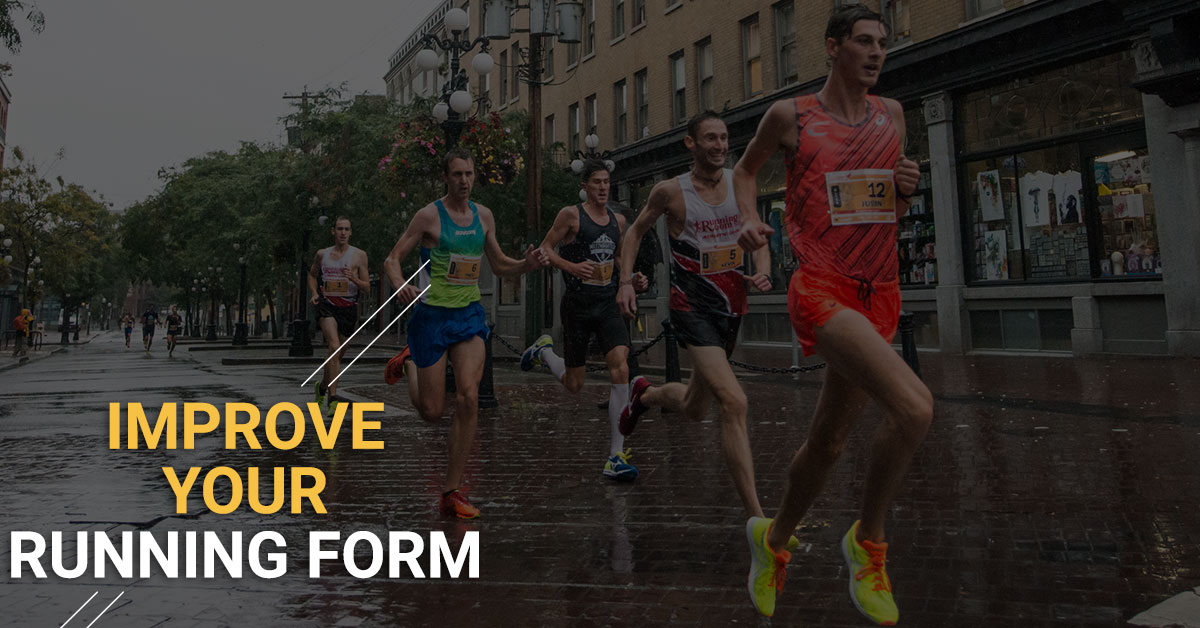
There are many ways to improve as a runner. If you’re a beginner, getting out the door and having consistent training will make you a better runner by just going through the motions. As you become more involved in the sport, you begin to make changes to training like incorporating speed work into your schedule, and maybe even seeking out a running coach to help you achieve your goals. As time goes on, you begin to nitpick the details. These details are typically part of one’s running form. Don’t try and fix every issue at once; focus on one change at a time to create better running habits. From head to toe, here are some things to consider:
Posture – Run with a slight lean forward that comes from the ankles, not the waist. Bending from the waist, hunching your shoulders, or a slumped position of any part of the body can restrict circulation and reduce the oxygen supply your muscles crave. You want to maintain a straight line from head to toe; try to maintain a forward lean of about 10 degrees. To practice, lean forward until you feel like you’re going to fall, then go up onto your toes. This posture will help gravity drive you forward while you’re running.
Head – Let your gaze guide you. Keep your head looking straight ahead at the horizon, and try not to lean your head back or jutted forward as this can put excess tension/stress on your neck. Your head position is the starting point of your entire body’s positioning.
Shoulders – Keep your shoulders low and loose. A lot of runners have a tendency to let their shoulders creep up towards their ears, especially as they get tired. If your neck gets sore and you feel there’s tension in your shoulders/neck, it’s probably due to keeping your shoulders in a shrugged position. Shake your arms outs when this happens to remind your upper body to relax. Tension anywhere in the body will make you less efficient.
Arms – Running is a lower body dominant activity, but your arms move in conjunction with your legs and are a critical part of proper running form. Keep your arms and hands relaxed, and don’t clench your fists. Pretend you’re running with a raw egg in each hand that you don’t want to crush. Keep your arms bent at a 90 degree angle and swing your arms forward and back between your waist and lower chest. Avoid too much cross-body movement.
Torso – As mentioned, it’s important to keep your back straight, without any exaggerated curvature in your spine. Keeping your shoulders relaxed and your head looking straight ahead will help maintain an upright position. Think of it as “running tall”; stretch yourself up to keep your whole body in alignment. It’ll also help keep your lung capacity at it’s maximum.
Hips – Your hips are your centre of gravity. While in a slight forward lean, it’s important to remember not to lean forward by bending from your hips. Doing so will restrict your leg movement/knee drive. Hunching over, or leaning too far forward will throw your body out of alignment and can put additional pressure on your lower back. If you finish long runs with a sore lower back, this is a key posture component to work on first.
Legs/stride – Following the rest of your body, your legs are your driving force. Keeping a slight forward lean will allow for optimal knee drive, and consequently more leg power. Over-striding occurs when you run too upright, reach your legs out ahead of your body, or land with a straight leg rather than a slightly bent knee. Instead, aim to keep your feet under you, not in front of you; and land with your knee slightly bent to absorb the impact of hitting the ground. Overstriding can put your hamstrings and knees at risk of injury, or cause shin splits. Try to increase your cadence in order to shorten your stride enough to have your feet underneath you.
Ankles/feet – While running, try to step quietly without slapping your feet onto the ground. Aim to land in the area between your heel and mid-foot, then roll forward to toe off and into your next step. You’ll be able to feel your calf muscles working at each push-off. The ankle will be slightly flexed to provide more force to each toe-off. Two words to describe good running form are springy and quiet.
There are many video resources on the internet that have great drills for improving your running form.







